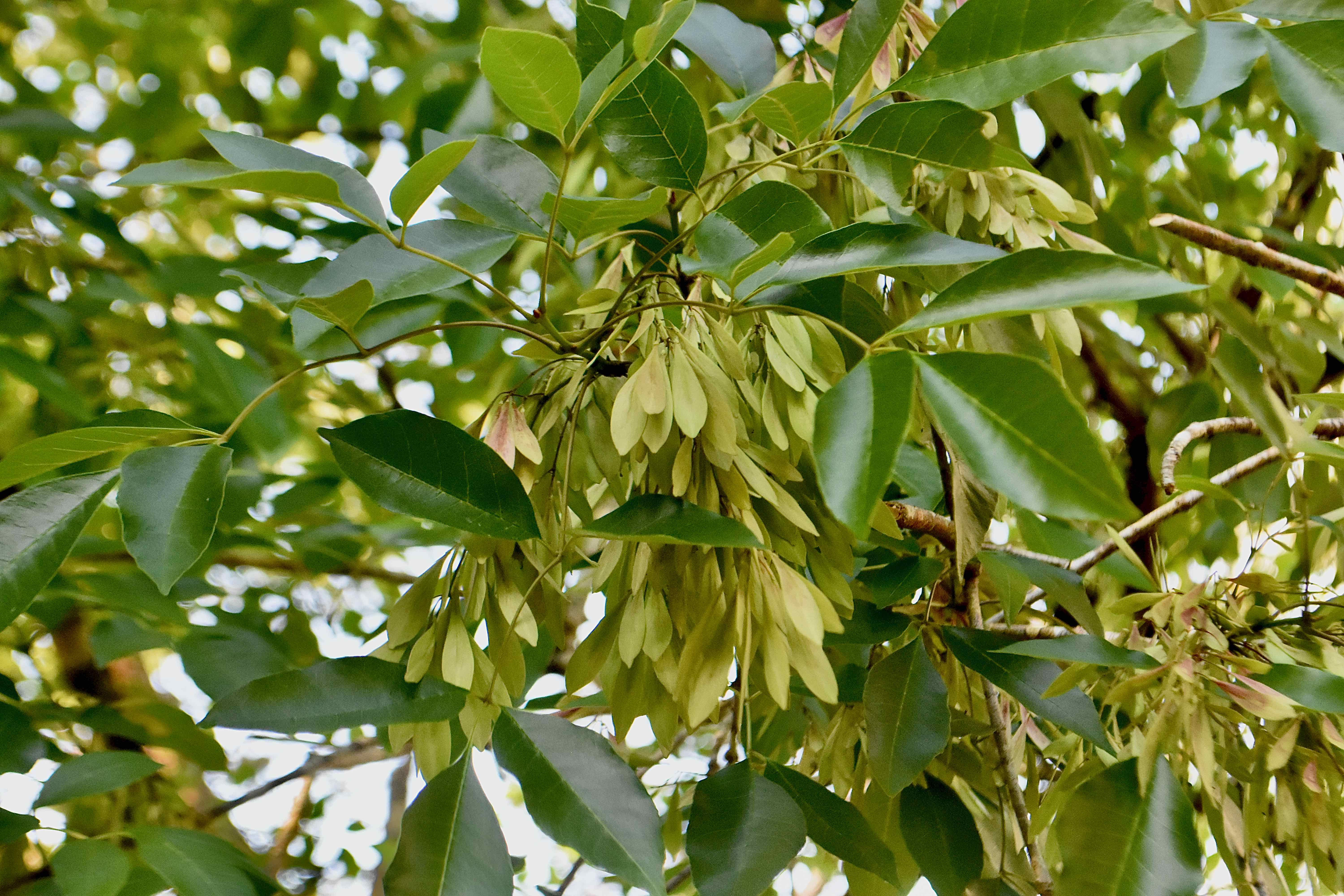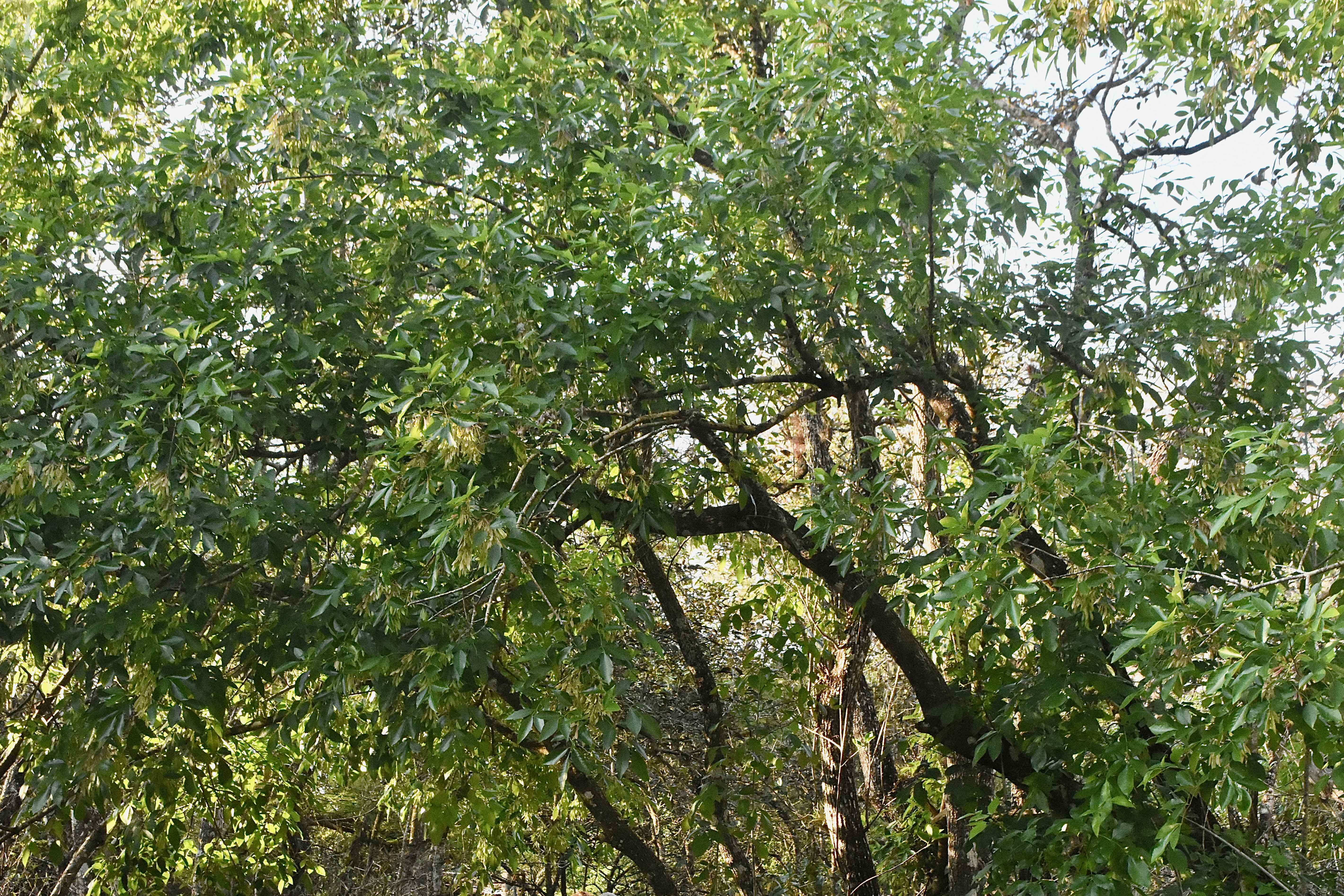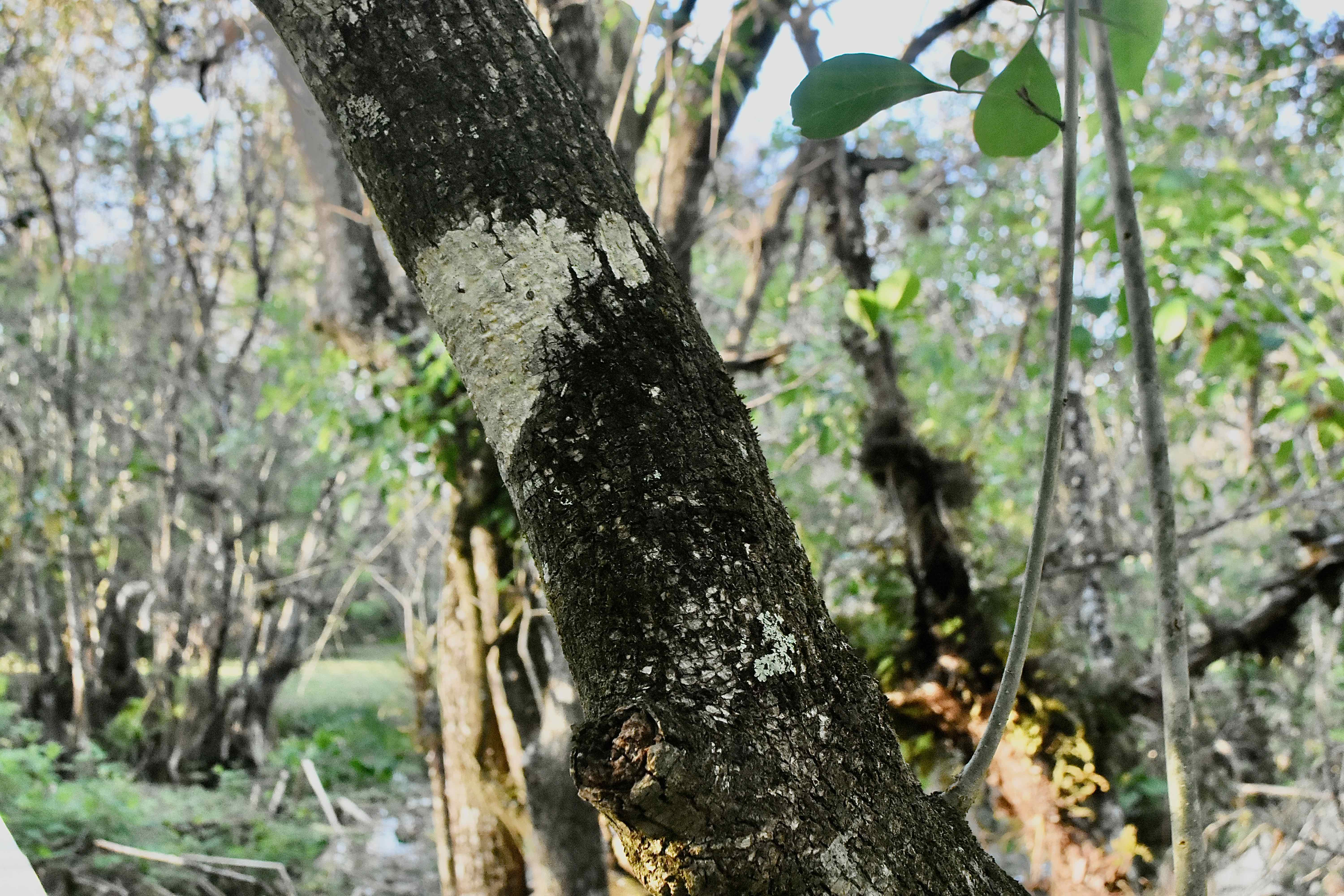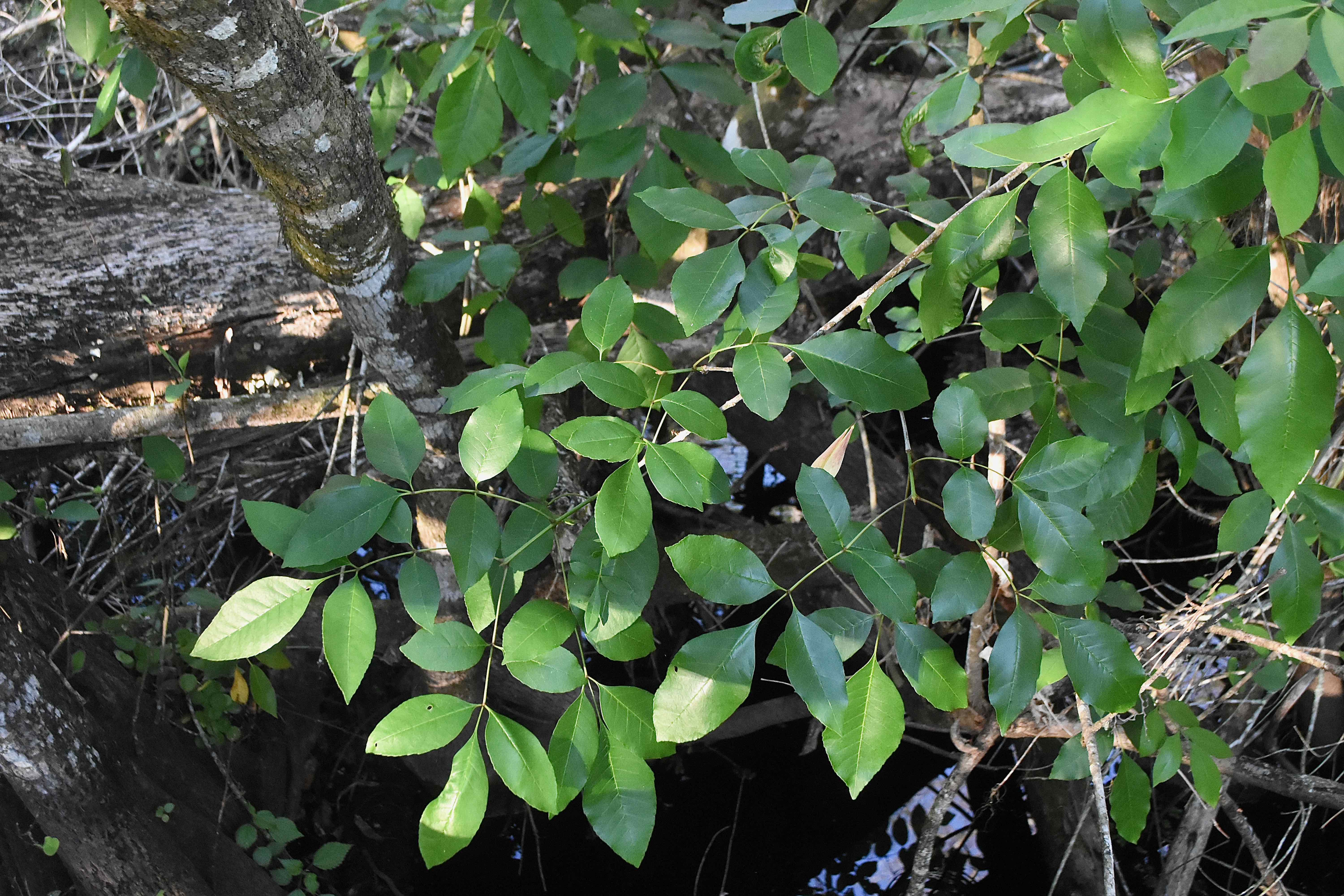
Pop ash, photographed at Corkscrew Swamp Sanctuary, Naples, Collier County, in February 2020.
Pop ash, Fraxinus caroliniana, is a rare tree in the wilds of South Florida, but in parts of its range, it could be on the verge of disappearing altogether.
Pop ash is a Florida native found growing in wet places, particularly swamps. In fact, one of its common names is swamp ash. Its range extends over much of the southeastern United States from Virginia to Texas.
It’s one of 50 or so species of ash found worldwide and one of four species found in Florida. It’s a small to medium sized tree in South Florida, typically 15 to 30 feet tall, but it can approach 60 feet in other parts of its range.
Thing is, ash trees, regardless of the species, are the favorite food of an invasive pest called the emerald ash borer. Not so much the adults, but the larvae, which bore their way into and through the tree, ultimately killing it. It was first discovered in Michigan in July 2002, and has since been found in 30 states.
But not Florida. Not yet anyway. There is a theory that the emerald ash borer can’t tolerate Florida’s heat, making it one of the few invasives that doesn’t like the Sunshine State. Of course, there is no way to test the theory without potentially setting off an environmental disaster, so the state’s agricultural and environmental watchdogs are taking no chances, sending out alerts and setting up monitoring stations to keep it out of Florida and quickly quell any outbreaks that might occur.
The emerald ash borers are small insects, with narrow, metallic green bodies. They don’t spread on their own, but through infested logs and firewood transported by us humans. If it’s true that they can’t take the heat, Florida might become the last bastion of ash trees in the U.S. Other species found in Florida: green, white and pumpkin ashes, according to the University of Florida. (Note: the Florida Atlas of Vascular plants lists only two besides pop ash.)
Pop ash is the only ash species found this far south, according to the Institute for Regional Conservation. Its range extends through the Panhandle and most of the Peninsula, though oddly skipping most of the Atlantic coastal counties south of Brevard. The one exception: Martin County. Though rare in South Florida, it is common farther north in the state. It is the one U.S. ash species the International Union for Conservation of Nature hasn’t listed pop ash as critically endangered, mainly because of its Florida population.
Pop ash can have a single trunk, or more likely multiple trunks. The leaves are compound, fairly large, with between five and nine leaflets each, and arranged opposite each other along the stem. The edges of the leaflets are serrated. The bark is grayish and smooth, but becomes darker and furrowed as the tree ages. In northern reaches of its range, it’s deciduous, meaning it drops its leaves in the fall.
Flowers are greenish white, clustered and bloom in the spring, giving way to a winged fruit called a samara (see the photo above). Pop ash is dioecious, meaning male and female flowers are on separate trees and it takes the presence of both in order to produce seeds.
It requires wet soil high in organic matter, and does not tolerate drought all that well.
The wood ls lightweight and soft, not considered useful as lumber. It is flexible, and the Miccosukee would use it to make bows and some tools. They also burned it.
It is cultivated and used around the edges of ponds and lakes and also in water gardens. One side note: ash trees generally spread pollen via wind, and are a problem for those with allergies.
Deer forage on pop ash and waterfowl eat the seeds. The eastern tiger swallowtail use the tree as a host for their larvae.
Other common names include Florida ash, Carolina ash, water ash, poppy ash and the aforementioned swamp ash. It is a member of Oleaceae, the olive family
Pop ash is a Florida native found growing in wet places, particularly swamps. In fact, one of its common names is swamp ash. Its range extends over much of the southeastern United States from Virginia to Texas.
It’s one of 50 or so species of ash found worldwide and one of four species found in Florida. It’s a small to medium sized tree in South Florida, typically 15 to 30 feet tall, but it can approach 60 feet in other parts of its range.
Thing is, ash trees, regardless of the species, are the favorite food of an invasive pest called the emerald ash borer. Not so much the adults, but the larvae, which bore their way into and through the tree, ultimately killing it. It was first discovered in Michigan in July 2002, and has since been found in 30 states.
But not Florida. Not yet anyway. There is a theory that the emerald ash borer can’t tolerate Florida’s heat, making it one of the few invasives that doesn’t like the Sunshine State. Of course, there is no way to test the theory without potentially setting off an environmental disaster, so the state’s agricultural and environmental watchdogs are taking no chances, sending out alerts and setting up monitoring stations to keep it out of Florida and quickly quell any outbreaks that might occur.
The emerald ash borers are small insects, with narrow, metallic green bodies. They don’t spread on their own, but through infested logs and firewood transported by us humans. If it’s true that they can’t take the heat, Florida might become the last bastion of ash trees in the U.S. Other species found in Florida: green, white and pumpkin ashes, according to the University of Florida. (Note: the Florida Atlas of Vascular plants lists only two besides pop ash.)
Pop ash is the only ash species found this far south, according to the Institute for Regional Conservation. Its range extends through the Panhandle and most of the Peninsula, though oddly skipping most of the Atlantic coastal counties south of Brevard. The one exception: Martin County. Though rare in South Florida, it is common farther north in the state. It is the one U.S. ash species the International Union for Conservation of Nature hasn’t listed pop ash as critically endangered, mainly because of its Florida population.
Pop ash can have a single trunk, or more likely multiple trunks. The leaves are compound, fairly large, with between five and nine leaflets each, and arranged opposite each other along the stem. The edges of the leaflets are serrated. The bark is grayish and smooth, but becomes darker and furrowed as the tree ages. In northern reaches of its range, it’s deciduous, meaning it drops its leaves in the fall.
Flowers are greenish white, clustered and bloom in the spring, giving way to a winged fruit called a samara (see the photo above). Pop ash is dioecious, meaning male and female flowers are on separate trees and it takes the presence of both in order to produce seeds.
It requires wet soil high in organic matter, and does not tolerate drought all that well.
The wood ls lightweight and soft, not considered useful as lumber. It is flexible, and the Miccosukee would use it to make bows and some tools. They also burned it.
It is cultivated and used around the edges of ponds and lakes and also in water gardens. One side note: ash trees generally spread pollen via wind, and are a problem for those with allergies.
Deer forage on pop ash and waterfowl eat the seeds. The eastern tiger swallowtail use the tree as a host for their larvae.
Other common names include Florida ash, Carolina ash, water ash, poppy ash and the aforementioned swamp ash. It is a member of Oleaceae, the olive family



